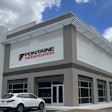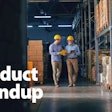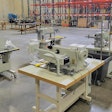Optronics International plans to unveil its new LED-based Purilite Light-Shield decontaminating light for the first time next month at NTEA Work Truck Show in Indianapolis.
According to Optronics, many who work in, on and around vehicles are exposed to microscopic airborne pollutants so small that they evade the body’s natural defense mechanisms, penetrating deep into respiratory and circulatory systems, and causing damage to lungs, hearts and brains. The United States Environmental Protection Agency (EPA), has developed ambient air quality trends for particle pollution, also called Particulate Matter (PM). PM 2.5 describes fine inhalable solid particles and liquid droplets, with diameters that are generally 2.5 micrometers and smaller. These particles include many types of mold and bacteria found in vehicles transporting food. PM2.5 also includes soot emitted by diesel engines and APUs.
Optronics says its new unique LED technology promises to combat these contaminants, bring a revolutionary level of hygiene to vehicles everywhere while improving air quality and enhancing worker safety in the process.
“Airborne and surface-based mold and bacteria are also a concern for those workers on vehicles that are exposed to biological residue and other contaminants,” says Brett Johnson, president and CEO, Optronics International. “Sleeper cabs, vehicles with multiple users, and dry bulk and refrigerated food transportation haulers may be at greater risk of exposure. The climate a vehicle operates in may also be a factor in allergen and pathogen proliferation.”
Optronics says Purilite Light-Shield LED lamps generate a constant stream of negative ions, created by a proprietary coating applied to their LEDs. The lamp provides decontamination and sanitization functions, while producing optimal light quality for human vision, approaching the color temperature of natural sunlight.
The ionic sanitization occurs through both physical and biological mechanisms, the company says. The negative ions bind to lightweight airborne PM2.5 particles, adding mass and enabling natural gravitational forces to remove them from the air by causing them to float safely to the ground. The negative ions also combine with positive molecules in mold spores and bacterial proteins, destroying them and causing them to decompose. Once terminated, Optronics sys what’s left of the pathogens also fall inertly to the ground. With viability removed, the biological remnants are rendered essentially sterile, reducing exposure risks even if they are disturbed and become airborne again.
“When the lights are on, they are doing their job, it’s deceptively simple,” Johnson says. “A sleeper cab driver can flip on these lights, go grab a bite and when they return, the cab environment will be significantly cleaner. If they prefer, drivers can remain in the cab while the lights are working, it’s perfectly safe just to leave them on.”











